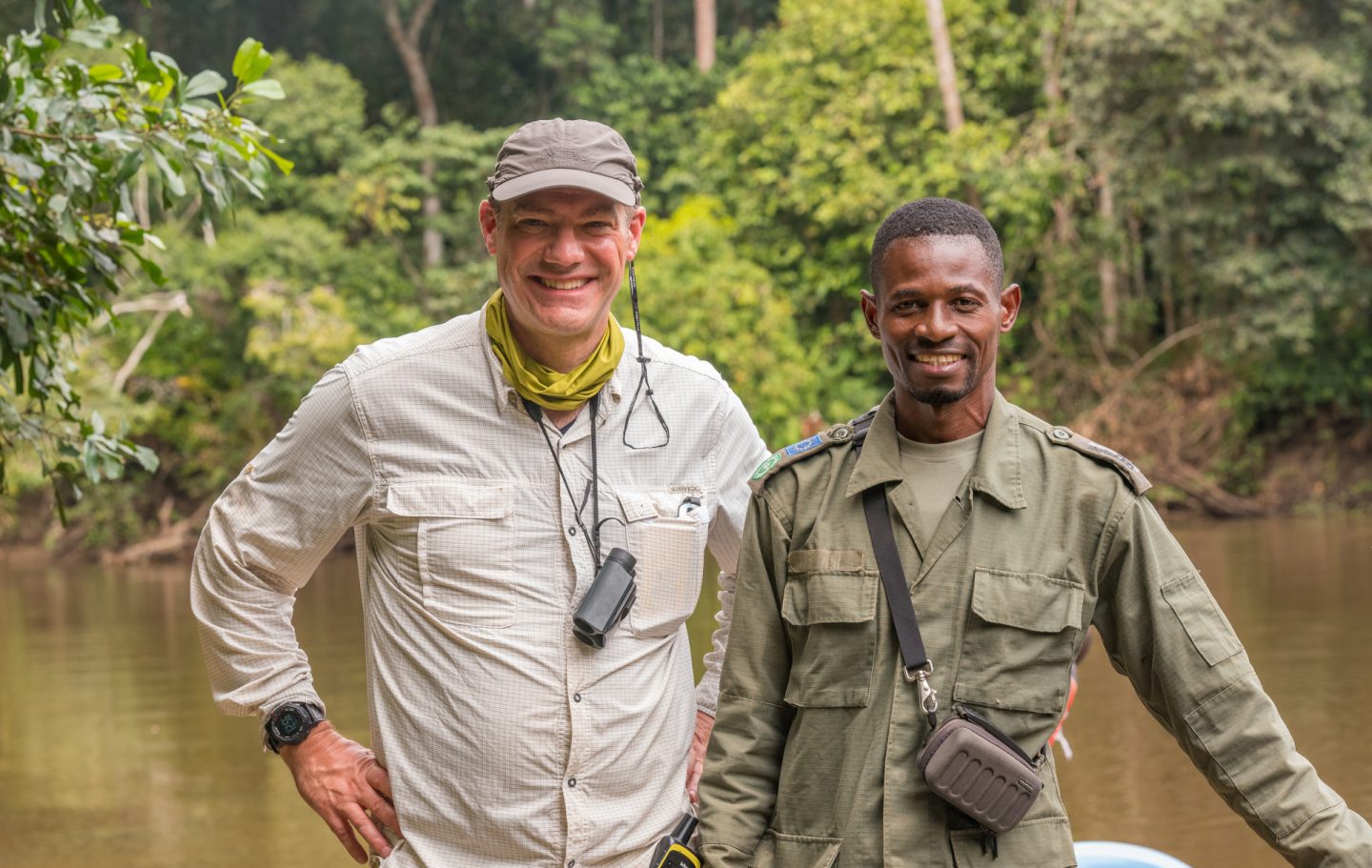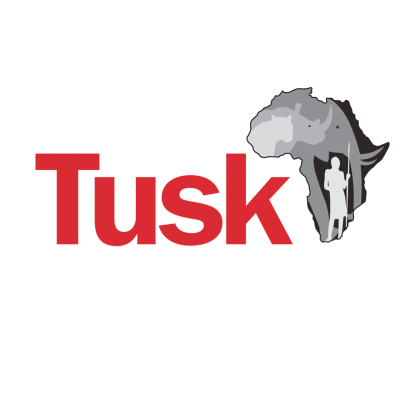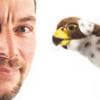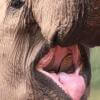Software and mobile applications are equally as important to conservation technology as the hardware used in the field. Increasingly developed specifically for #tech4wildlife needs, there are mobile apps and software options designed to help with protected area management, wildlife crime reporting, and anti-poaching patrol planning, data analysis, community science, data visualization and GIS mapping, outreach and engagement, and even conservation storytelling.
Likewise, mobile games have opened up new avenues for engaging the public in conservation efforts, allowing for immersive storytelling and interactive experiences. By combining cutting-edge technology and important conservation information with a media form already familiar to the public, conservationists are finding exciting ways to make audiences feel personally invested in critical species and habitats.
Whether you're looking for software and mobile app developers to help you with your own conservation tech needs, you have questions about development, you're looking for resources, or you'd like to share your own app, software, or gaming tools, this is the group for you!
Header photo: Trevor Hebert
I am both head of the Innovation department and a biodiversity consultant at the Biotope consultancy. Originally a botanist and GIS expert, I specialise in the management of innovation projects, in particular software and technological products dedicated to biodiversity.
- 0 Resources
- 0 Discussions
- 6 Groups
Island Conservation
- 1 Resources
- 0 Discussions
- 3 Groups
- @CatherineJardine
- | She/Her
Birds Canada Data Science and Technology Team. Primarily working on Motus and NatureCounts.
- 0 Resources
- 0 Discussions
- 5 Groups
St. Lawrence University
Professor of Biology at St. Lawrence University
- 0 Resources
- 2 Discussions
- 13 Groups
- @nicoboenisch
- | He / him / his
Co-Director FOS Europe, Conservation Strategist and Technical Advisor to the Miradi Software Team, Improving Conservation through Adaptive Management and Evidence-based Learning
- 0 Resources
- 0 Discussions
- 8 Groups
- 0 Resources
- 0 Discussions
- 7 Groups
Co-founder and CEO of Goldfish.io
- 0 Resources
- 1 Discussions
- 6 Groups
M.A.P Scientific Services
Co-founder and Director of M.A.P Scientific Services, South Africa
- 0 Resources
- 0 Discussions
- 8 Groups
Natural Solutions
Engineer, Ph.D in Computation Ecology. Interested in developing tools for the massive acquisition of high dimensional data from new technologies (e.g., imaging, omics), their analysis and visualization.
- 0 Resources
- 0 Discussions
- 13 Groups
- @Gody
- | He
Godfrey Nyangaresi, a dedicated Protection Manager with 12+ years of wildlife conservation experience. Skilled in technologies, administration, and law enforcement, he leads protection efforts at STEP, ensuring the sustainable conservation of elephants in southern Tanzania.
- 0 Resources
- 3 Discussions
- 17 Groups
- @jmondragon
- | He/Him
- 0 Resources
- 1 Discussions
- 5 Groups
Director of Spatial Planning and Innovation Nature Conservancy of Canada
- 0 Resources
- 0 Discussions
- 12 Groups
Do you have photos and videos of your conservation tech work? We want to include them in a conservation technology showcase video
17 May 2024
Article
Read in detail about how to use The Inventory, our new living directory of conservation technology tools, organisations, and R&D projects.
1 May 2024
Article
The Inventory is your one-stop shop for conservation technology tools, organisations, and R&D projects. Start contributing to it now!
1 May 2024
Technology to End the Sixth Mass Extinction. Salary: $132 - $160k; Location: Seattle WA; 7+ years of experience in hardware product development and manufacturing; View post for full job description
1 May 2024
Review by Professor Iain H Woodhouse
29 April 2024
In a recent publication we tested Underwater Passive Acoustic Monitoring (UPAM) as a feasible non-invasive technique to study the calling behavior of therathened aquatic Andean frogs under natural conditions in the...
6 April 2024
Article
visualization, annotation, and analysis of GPS and tag sensor data - a tour of the latest version
20 March 2024
Emerging trends for Nature-Based Solutions project assessments
8 March 2024
more affordable pricing for our software for the visualization and annotation of GPS and acceleration data
4 March 2024
Join us to help prevent biodiversity loss! Understory is hiring a postdoc to lead R&D Development on generalizing Computer Vision models for vegetation identification across space/time/phenotypes.
29 February 2024
Careers
The SMART Partnership is hiring a Program Director to oversee all aspects of the partnership's operations
21 February 2024
How Earth Blox reduced biodiversity impact analysis from 2 months to 1 hour for a global bank.
20 February 2024
July 2024
event
October 2024
August 2023
event
event
June 2023
event
40 Products
Recently updated products
| Description | Activity | Replies | Groups | Updated |
|---|---|---|---|---|
| Hi folks! Happy 2024 and thanks in advance for your patience in case I over-used tags. If you’re using any form of natural language... |
|
AI for Conservation, Citizen Science, Climate Change, Conservation Tech Training and Education, Data management and processing tools, Early Career, East Africa Community, Emerging Tech, Ending Wildlife Trafficking Online, Ethics of Conservation Tech, Human-Wildlife Conflict, Open Source Solutions, Software and Mobile Apps, Wildlife Crime, Women in Conservation Tech Programme (WiCT) | 4 months 2 weeks ago | |
| camtrapR has a function that does what you want. i have not used it myself but it seems straightforward to use and it can run across directories of images:https://jniedballa.... |
+2
|
Camera Traps, Data management and processing tools, Open Source Solutions, Software and Mobile Apps | 5 months 2 weeks ago | |
| (duplicate) |
+5
|
Software and Mobile Apps | 5 months 3 weeks ago | |
| I'm registered with the TWS2023 app, so feel free to nudge me there as well |
|
Biologging, Remote Sensing & GIS, Software and Mobile Apps | 6 months 2 weeks ago | |
| Thanks Arky! |
|
Software and Mobile Apps | 6 months 2 weeks ago | |
| Hi @GermanFore ,I work with the BearID Project on individual identification of brown bears from faces. More recently we worked on face detection across all bear species and ran... |
|
AI for Conservation, Camera Traps, Data management and processing tools, Software and Mobile Apps | 6 months 2 weeks ago | |
| We use Kobo as well - it is amazing!!! |
+6
|
Data management and processing tools, Software and Mobile Apps | 8 months ago | |
| 'Gundi, meaning “glue” in Swahili, is a technology platform that allows conservationists to seamlessly integrate any hardware with any... |
|
Data management and processing tools, Sensors, Software and Mobile Apps | 8 months 1 week ago | |
| Hi Tobias! This sounds great and I am looking forward to trying it out after returning from field work! Very cool with the Vectronic Activity data! I am looking forward... |
|
Biologging, Software and Mobile Apps | 9 months 1 week ago | |
|
|
Climate Change, Community Base, East Africa Community, Emerging Tech, Software and Mobile Apps | 9 months 3 weeks ago | ||
| Hello! I'm a researcher at Loughborough University looking at how individuals use mobile phone apps to engage in climate/environmental... |
|
Software and Mobile Apps | 9 months 4 weeks ago | |
| There is the Conservation Tech Directory! There's an 'open-source' tag you can search by too. |
|
Open Source Solutions, Software and Mobile Apps | 10 months 2 weeks ago |
Call for ideas & feedback
2 January 2019 5:24pm
11 February 2019 9:57pm
Hello Sean
If you want to get hands-on with thermal imaging hardware then you may be interested to know that this type of technology has dramatically reduced in price in recent years. IR cameras used to costs thousands (€, £, $) but can now be had for around US$500. See here for the FLIR C2: https://www.flir.com/products/c2/
I bought one of these a couple of years ago for building inspections etc. I would expect it to show very clearly any captured animals as long as they are alive. Having said that, you need ideally a good difference in temperature between object of interest and surrounding area. From my time in Taiwan I would expect that for some part of the year you won't get much contrast. Worth trying anyway. This would, of course, be a rather manual solution to finding captured animals.
In theory, you would be able to pick up metal objects with this, too, even if they are at the same temperature as their surroundings. Bare metals (i.e. not covered in something like paint) have a very different "thermal signature" (technically known as "emissivity") from many other materials. This means they usually appear much cooler in a thermal image than they actually are. The reason you are unlikely to pick this up with a basic IR camera is quite simply the low resolution of such cameras. The FLIR C2 has 60x80 pixels. Much more expensive cameras are better on this point but you would still have to watch very carefully to pick up a thin wire that would only be a few pixel wide at the most.
It may be worthwhile getting in touch with FLIR directly to see what ideas they have. I would not be surprised if they have a base in Taiwan.
Good luck,
Joachim
11 February 2019 10:27pm
Hello Sean
I just had another thought: industrial machine vision systems come with all sorts of image inspection tools including such things as "edge detection". I wonder if this could be used in conjunction with a normal (not thermal) high resolution digital camera.
The general idea would be to:
1. take photos whilst on the move through a snare-infested area where a high res camera would be able to pick up a thin wire loop with sufficient resolution to make it visible;
2. let attached computer with vision software analyse images instantly for straight or looped edges that would indicate a snare.
What could help considerably is to take pictures in subdued natural light, maybe at dusk or dawn using a strong flash, possibly not just the built in flash of the camera but an external one. On the assumption that most snares are made from plain "shiny" metal, they should show up fairly well as "bright highlights" against the otherwise fairly dull (in terms of specular reflection) undergrowth. It would get more difficult though if the foilage was covered in water droplets as these would reflect the flash light, too.
I admit this is an idea that just sprung to mind and I have no idea how well this may work in practice. If you want to have a go yourself, set up a typical "snare scenario" and take some high resolution photos as described above from a few metres away. Then use free vision system software to process the images on your computer and see what you can find. Try this one, for example, https://www.teledynedalsa.com/en/products/imaging/vision-software/sherlock/
I have used it some years ago (for an industrial application) and found it very useful on early trials as it allows you to use all features processing images from a local folder rather than a live camera. This would be all you need to test whether there is any merit in this.
Sorry if industrial vision applications are not within your skill set but I thought I mention it here in case someone else wants to investigate it. I am not exactly twiddling thumbs otherwise I would be seriously tempted to have a look at this myself (pun intended:)).
Let me know if you need some more input on this,
Joachim
P.S.: A rough calculation on camera resolution:
- snare wire diameter is, say, 3 mm
- target size in image of the wire is at least 6 pixels (to reliably show diagonal edges)
- 20 Megapixel camera image is about 5000 pixel wide
- then you could cover an area 2.5 m wide per image (5000 / 6 * 3)
> this may be a workable distance to cover per image.
rOpenSci Community Call - Governance strategies for open source research software projects
10 December 2018 5:18pm
Open spots available at SMART Advanced Training in Zambia January 2019
6 December 2018 1:13pm
How to help
22 November 2018 3:52pm
27 November 2018 2:51am
Hi Ross,
Let's connect - I am a social scientist that has been researching demand reduction and am working on some projects, including a website, that helps consumers avoid illegal "unsafe" souvenirs. I have a few ideas floating around in my head that would take someone more tech-savvy than me to know if feasible - maybe we can exchange thoughts via email. I'd love to hear more about your ideas to reduce demand!) Feel free to email me at [email protected].
Best, Rosemary
29 November 2018 2:31pm
Hi Ross,
We are developing a web-based platform with multiple tools to analyse biodiversity quality, habitat assessement management and other apps. We need some help thinking how to monetise the apps/subscriptions as well as further developing the platform. You can email me here: [email protected] if interested. Thanks.
Kind regards,
Vance
WILDLABS Virtual Meetup: Big Data in Conservation
27 November 2018 12:00am
Project BEESWAX7 Infographic
13 November 2018 2:27pm
26 November 2018 9:10am
Love it! Covers so many of my interests - conservation, beekeeping and fiddling with Arduinos - would love to know more about the project.
Live discussion on intersection of conservation and games
14 November 2018 1:22pm
23 November 2018 3:14pm
Hey Gautum,
Looks like the interview went really well! If people weren't able to make it, Gautam's interview along iwth others in the series are all available to watch here.
Steph
A technologist's journey to protect wildlife: The reality and potential of conservation technology (recorded talk)
 Ted Schmitt
Ted Schmitt
22 November 2018 12:00am
Developer job at Octophin Digital
13 November 2018 2:50pm
Mobile App Comparison Table
14 August 2018 5:12pm
19 September 2018 6:51pm
iRecord App - is UK specific, but allows to record over 100,000 taxa.
19 September 2018 11:25pm
Some other data collection apps.
https://www.proofsafe.com.au/
https://five.epicollect.net/
19 October 2018 2:16pm
Hi Shannon, this is really useful, thanks!
Tusk Conservation Lecture 2018: Ted Schmitt
 Tusk
Tusk
15 October 2018 12:00am
Looking for a front-end developer for the AI for Earth call for project
14 September 2018 2:32pm
Ocean Hack: San Francisco, 10-11th September, 2018
 One Ocean Collab
One Ocean Collab
20 August 2018 12:00am
Wildlife monitoring using Smart-Cities tech
14 June 2018 10:49am
2 August 2018 1:23pm
Hi Nilaksha!
Thanks for your comments and interest in our project. I read your project profile and would like to suggest that you take a look at using LoRaWAN for low levels of communications traffic? We are looking and testing kit for use with the www.thethingsnetwork.org It might use less power than cellular or wifi networks?
I hope this helps,
2 August 2018 1:36pm
@simulsys Thanks Andrew. Indeed we're looking into LoRa technologies.
8 August 2018 11:18am
Both initiatives are very interesting. I love the one about the elephants that @nilaksha comments.
There are currently several projects that are using artificial intelligence (in fact, Microsoft is looking for interested parties for possible funding https://www2.fundsforngos.org/environment-conservation-climate-change-and-ecology/ai-for-earth-program-seeking-proposals-from-all-over-the-world/). But its main objective is to identify the species thanks to techniques such as deep learning and I do not know if it would be applicable in the present case.
Regards,
Judit
Wildlife Crime App Development
19 August 2016 11:53pm
12 July 2018 9:45pm
Hi Rosemary,
I know this is from quite a while ago, but I'd be interested in hearing how this moved forward and connecting with you. Please feel free to reach out directly - my email is [email protected].
Best, Maya
7 August 2018 9:21pm
Hi Maya,
We were able to get a website developed (www.safesouvenirs.com) but are now waiting on possible grant funding. In order to move forward, we would like to some work on uploading to our database and also getting into airports to advertise. So, fingers crossed that we are successful with the grant. Either way - I think it would be great to connect. I'll follow-up with a direct email.
Best, Rosemary
8 August 2018 11:05am
Hi Rosemary,
Do you know this website that gathers grants and resources for sustainability?
https://www2.fundsforngos.org/category/environment-conservation-climate-change-and-ecology/
Regards,
Judit
2-Way SMS solution for communication between Park management and Communities
17 May 2018 8:09am
25 May 2018 2:16pm
Hello Drue,
Thank you for your feedback. This is very helpful. I'll do my research on the signal application to see if it can be of help to us. I already am thinking of developing an application for the same. What are your thoughts? Is there a community of guys who can assist me in building this?
If you happen to get any more ideas, I will apreciate. You can reach me on the below email address.
Regards,
Damian
26 May 2018 6:07pm
Hi Damian,
Just sent you an e-mail with some other thoughts.
Good luck!
Drue
17 July 2018 5:29am
Hi Damian,
You could use a SMS gateway, which acts as a link between two mobile devices in order to send SMSes. As Drue stated out Whatsapp or other applications might be better given the added functionality they provide.
What's your favorite wildlife/nature game?
2 March 2018 1:27pm
26 June 2018 10:36am
just wanted to bring our game to your attention, Serengeti: A Race For Life
https://serengeti.store/serengeti-hal001
The game is a joint venture between myself and my partner, who is responsible for the art direction.
If your article is still pending, we would be more than happy to provide a review copy for you, and make ourselves available for any questions you may have.
Thank you for providing a much-needed space to discuss games that aim to educate and raise awareness to the challenges of conservation.
28 June 2018 7:56am
Thanks Richard. Welcome to the (silent) community. We actually already wrote the article, but thanks for the reminder that I should post a link!!! https://www.internetofelephants.com/news/2018/4/25/five-games-apps-for-conservation
We'll be happy to take a closer look at Serengeti: A Race for Life
Gautam!
Using app-building tools for conservation monitoring
1 February 2018 5:19pm
15 March 2018 1:19am
I've just started looking at an app called ProofSafe, which will probably do what you want.
16 May 2018 5:42am
Hi @djscrazyhorse
I've been looking at a similar thing. I actually decided against it in the end, and instead to take a tack of developing a solution for a particular niche.
I just published an article about the thought process here:
https://medium.com/mdes-environmental-social-impact/photo-monitoring-for-the-flax-roots-557749cdb6f3
Would love to hear your thoughts.
Any reason you went with those particular App Builder solutions, out of interest?
Photopoint Monitoring Solutions?
2 May 2017 1:29am
19 May 2017 11:12am
Hi Sam!
Some weeks ago I analyzed in my website an app called GrowApp (https://www.greenappsandweb.com/en/android-en/four-seasons-of-the-year-timelapses-growapp/) that allows you to create timelapses relate with the phenology of the plants, to study how they are adapting to the climate change. I don't know if something like this could be useful to you
Judit
8 September 2017 5:24am
Thanks for sharing this Judit. I've had a play with GrowApp now, and my reflections are:
- the map centric view is probably really useful for people who are monitoring a series of trees / plants, but it doesn't serve as a particularly helpful presentation method for conservation groups in my opinion. Most groups have to upload a series of static images to a web form / send by email, to funders. Sending a link to the map would probably get them a nod of approval, but it wouldn't help them comply with their funding contract.
- I really like the way the photostitching is fully automated. Just take more than one photo and you get a little rolling timelapse.
- They also executed the 50% opacity overlay in a really nice simple way, which makes it easier to line up, though I think there could be a little more automation of the moment of capture (a la Google Photoscan) to make sure they really line up.
So overall, definitely an interesting example, but it's definitely made for another use (low friction citizen science) as it's primary flow and interface.
16 May 2018 3:49am
Hi everyone,
I decided at the end of last year, that it wasn't good enough that there's no good Photo Monitoring Apps on the market, and started to design my own.
Here's a blog post about that process:
Photo Monitoring For The Flax Roots

SMART 2017 Annual Report
15 May 2018 5:39pm
New Mobile App for Reporting Illegal Ivory
31 January 2018 1:52am
31 January 2018 9:00pm
Congratulations on the release of your app, @SueOrloff . Crowd-sourcing reporting of suspected illegal ivory in retail by members of the public, is a great concept (keeping verification and security considerations in mind). Given that there are many elephant ivory look-alikes on the market, including in online trade, it's important to ensure proper identification when users submit reports. TRAFFIC and WWF put together a visual ID guide many years ago, which can be downloaded here: http://www.traffic.org/publications/identification-guide-for-ivory-substitutes.html and the US Fish & Wildlife Service has an online guide to visual identification here: https://www.fws.gov/lab/ivory_natural.php.
13 February 2018 7:46pm
Do federal laws against illegally selling ivory only apply when there is an interstate commerce element? If so, how is that typically proven?
Thanks
21 February 2018 2:26am
I did some research and here is what I found. Basically, federal laws prohibit the intrastate sale of ivory if it was imported after 1990 (CITES) and the interstate sale of ivory if it's under a 100 yrs old (considered an antique).
Landsense Innovation Challenge
19 February 2018 12:00am
Call for papers/participation: Workshop on lessons learned from volunteers’ interactions with geographic citizen science applications, 27 April 2018, London
29 January 2018 10:46am
Species names API feedback
25 January 2018 11:19am
Technology Empowered Conservation Lecture Series
 Paul Jepson
Paul Jepson
18 January 2018 12:00am
Congratulations to Zoohackathon winners, team ODINN!
 Zoological Society of London
Zoological Society of London
6 December 2017 12:00am
FIT Cheetahs
 Larissa Slaney
Larissa Slaney
4 December 2017 12:00am
Finding Souvenir Data
9 November 2017 5:31am
9 November 2017 6:18pm
Hi Rosemary,
Great idea!
Just thinking outloud here, but is it wise to tell people where to find unsafe souvenirs? Wouldn't this be helping people who want to find ivory, fur, medicinal animal products, etc. more easily find sources? You might want to create a "blacklist" without being overly specific as to the types of procucts they are selling, and give a "seal of approval" for souvenir stores that are not selling illegal wildlife products and use this as a "carrot" to attract consciencious customers to the better stores.
Regards,
Drue
Has anyone tried out the Forest Watcher Mobile App?
27 October 2017 7:57pm
1 November 2017 11:16am
Hi Liz - Steph encouraged me to have a play for our project in South Sudan. I was surprised the reference area allowed when setting up the app was fairly small but presume this is because it encourages local snapshots rather than a large scale overview. However I don't think there should be a problem with covering a larger reference area that can be zoomed into unless it makes the usability worse. For any sizeable PAs you'd have to create multiple 'areas' and this is quite tricky to do as the PAs didn't show up automatically on the reference map. Great innovative app though and I am happy to be a guinea pig. Rob
HWC Tech Challenge Update: Meet the Judges
20 October 2017 12:00am




































































7 February 2019 12:45am
It certainly is. Whatever gets the job done and makes it easier for us to find the animals and prosecute the poachers. Also interested in thermal-imaging hardware and perhaps radar. I'm new to them all.